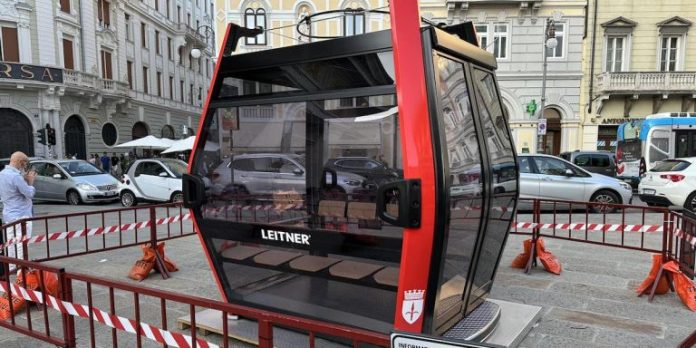by InTrieste
The proposed Trieste-Opicina Metropolitan Cable Car project has taken a major step forward following approval from Italy’s Ministry of Environment. The project, which aims to create a cableway connecting Trieste’s city center with Opicina, received clearance after a thorough environmental review conducted by the regional government of Friuli Venezia Giulia (FVG) and the University of Udine. The review concluded that the project, with compensatory measures, would “not cause significant environmental damage,” affecting only a small portion of the protected Natura 2000 site.
This decision allows the Municipality of Trieste to move forward with the “North Access Systemic and Touristic Mobility” variant, which had been adopted by the City Council in 2023. The variant is part of a broader plan to improve public transportation, reduce traffic congestion, and support the development of the Porto Vecchio district, an area undergoing significant transformation.
The project has been framed by local authorities as a key component of Trieste’s strategic plan for sustainable development, with promises of reducing CO2 emissions, improving public health, and enhancing road safety by reducing traffic-related accidents. According to the regional government, the cable car will provide an efficient and environmentally friendly alternative to road-based transportation.
Local Opposition: The “No Ovovia” Movement
Despite the progress, the project faces opposition from local activists and residents, who have organized under the “No Ovovia” movement. The group argues that the cable car system is an unnecessary and costly project that could negatively impact the landscape and local communities. They have also raised concerns about its long-term sustainability and whether it will effectively solve the city’s transportation challenges.
Francesco Russo, a prominent figure in the opposition, has launched a petition on Change.org titled “Adesso Basta! No All’Ovovia di Trieste con i Nostri Soldi,” which has already gathered 8,500 signatures. The petition highlights the group’s dissatisfaction with the project, calling for the funds to be used on what they see as more pressing and feasible alternatives.
“No Ovovia” has also criticized the lack of exploration of other transport solutions, such as enhancing the tram network. Opponents argue that the cable car is being prioritized without thoroughly considering alternative infrastructure improvements, such as tram extensions, which they believe could better address the city’s mobility issues without altering the landscape.
In response to these concerns, local authorities have emphasized that the project will have minimal impact on protected areas, with the Ministry of Environment’s approval based on the finding that it would affect just 1 hectare of the 12,000-hectare Natura 2000 site. Additionally, the University of Udine’s study suggests the cable car could contribute to environmental improvements by reducing traffic and emissions.
A Divisive Project
While officials and supporters argue that the cable car will provide faster access to the city center and the Porto Vecchio area, the opposition remains active. Francesco Russo’s petition and the ongoing campaign against the project highlight the divisions within the community. The debate centers on whether the cable car is the best solution for Trieste’s long-term needs or a costly venture that could strain public resources.





























